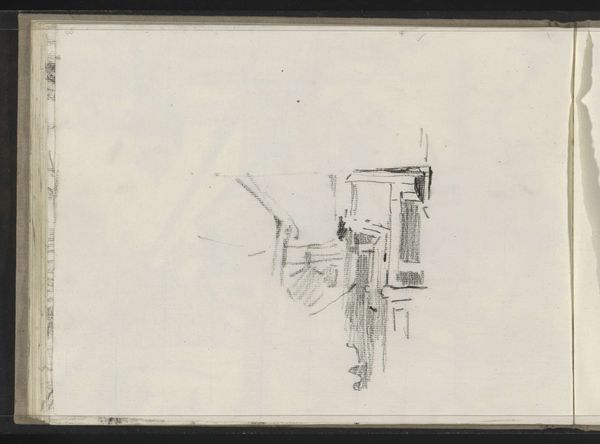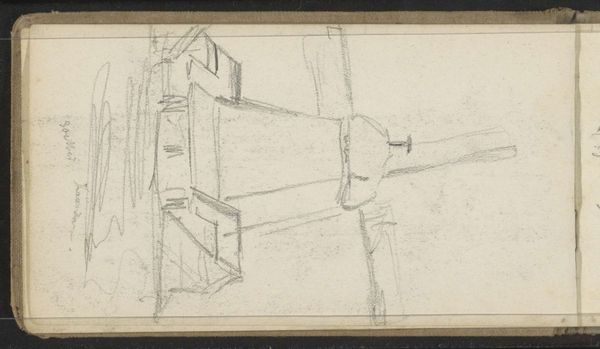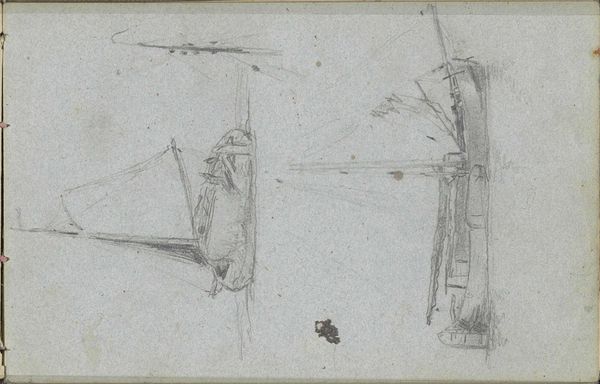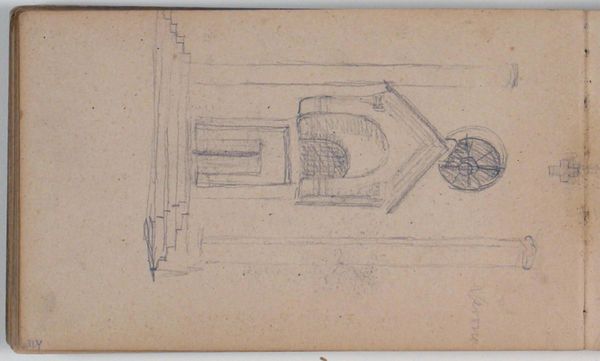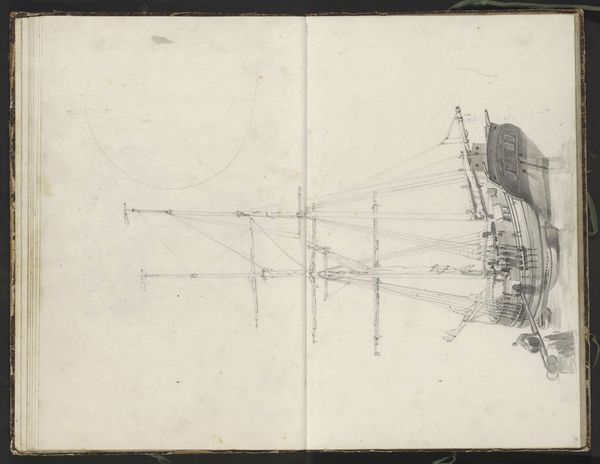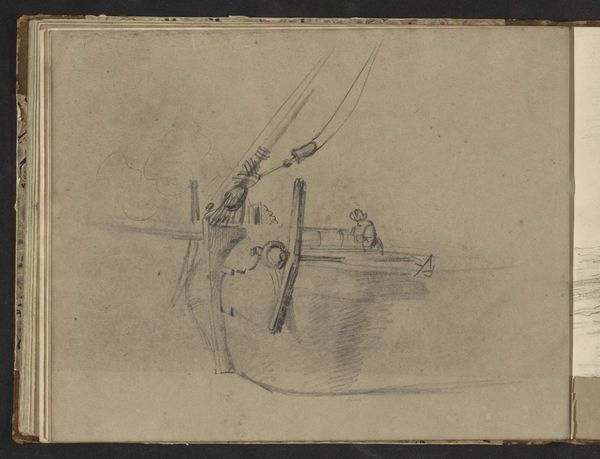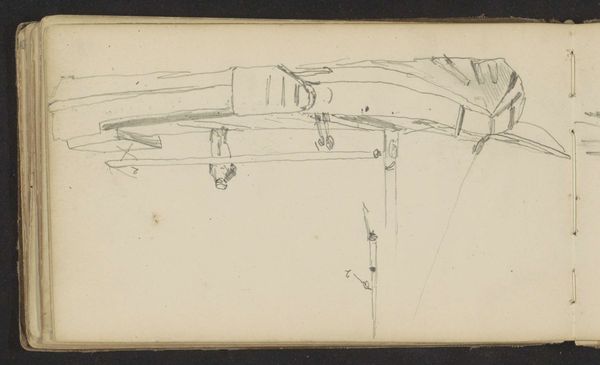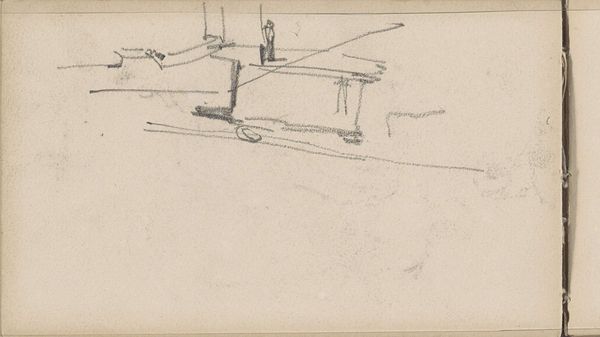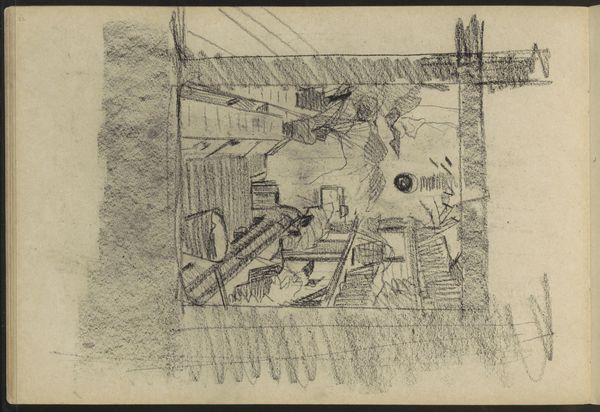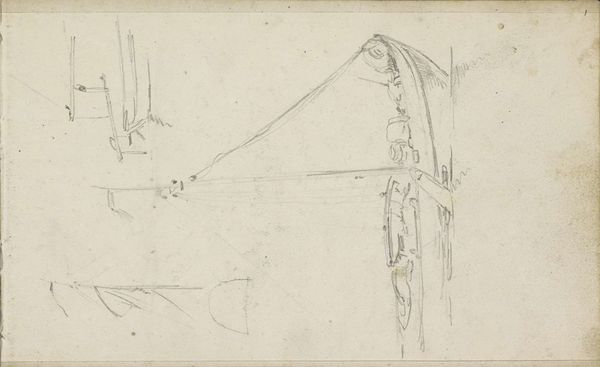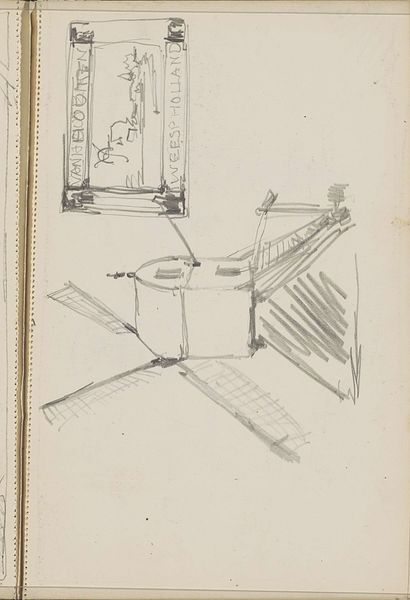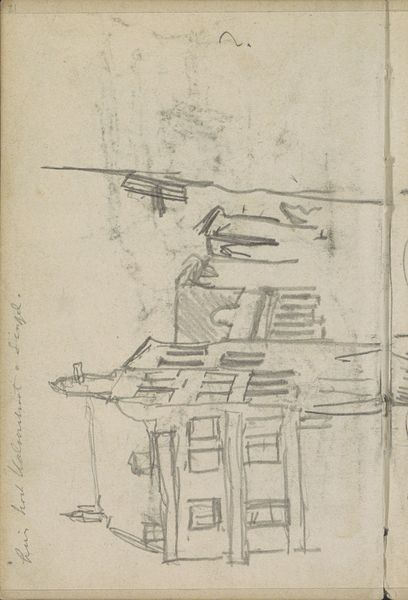
drawing, pencil
#
drawing
#
landscape
#
pencil
#
realism
Dimensions: height 104 mm, width 179 mm
Copyright: Rijks Museum: Open Domain
Curator: Here we have a pencil drawing titled "Molen te Zaandam," created around 1895 by Willem Cornelis Rip. My immediate thought is its sparseness—such deliberate use of line and tone to convey the scene. Editor: There’s an undeniable somber quality to it, a sort of muted reflection on industry and labor at the close of the 19th century. One wonders about Rip’s relationship with this subject matter and with the people employed by such a site. Curator: Exactly, consider how the drawing, as a mass-reproducible object itself through lithography perhaps, parallels the industrial process it depicts. What are the links between artistic labour and other forms of making and production during this period? And what part does this windmill play in the landscape and in the wider political economy? Editor: The skeletal form of the mill reminds me of representations of exploited labour, rendered as gaunt and fragile in socialist realist art, for example. We should remember Zaandam's importance as an industrial area of the Netherlands, dependent on wind power but also subject to changing labor practices in this period. One should always examine art in the framework of what forces affect a place. Curator: The material simplicity really foregrounds these discussions. It’s "just" pencil on paper, a common and cheap means of production. By focusing on these ordinary windmills Rip elevates the mundane. It offers access to scenes and activities absent in official commissioned works. This emphasis of drawing seems in line with the Hague School of painting, where depictions of nature were valued for its perceived reality, including the hardship of daily living. Editor: And yet that seeming straightforwardness complicates our view. Think of the implications around ideas of “nature,” nationhood, and their relation to the burgeoning industry being recorded, maybe even glorified, in a romanticized view here? Curator: Right! It reminds me how art can be at once revealing and concealing—showing process, social structures, and our ever-changing place within them. Editor: Agreed! And examining drawings such as this gives us a deeper understanding of this nuanced narrative around industrial labor in relation to our complex modernity.
Comments
No comments
Be the first to comment and join the conversation on the ultimate creative platform.
